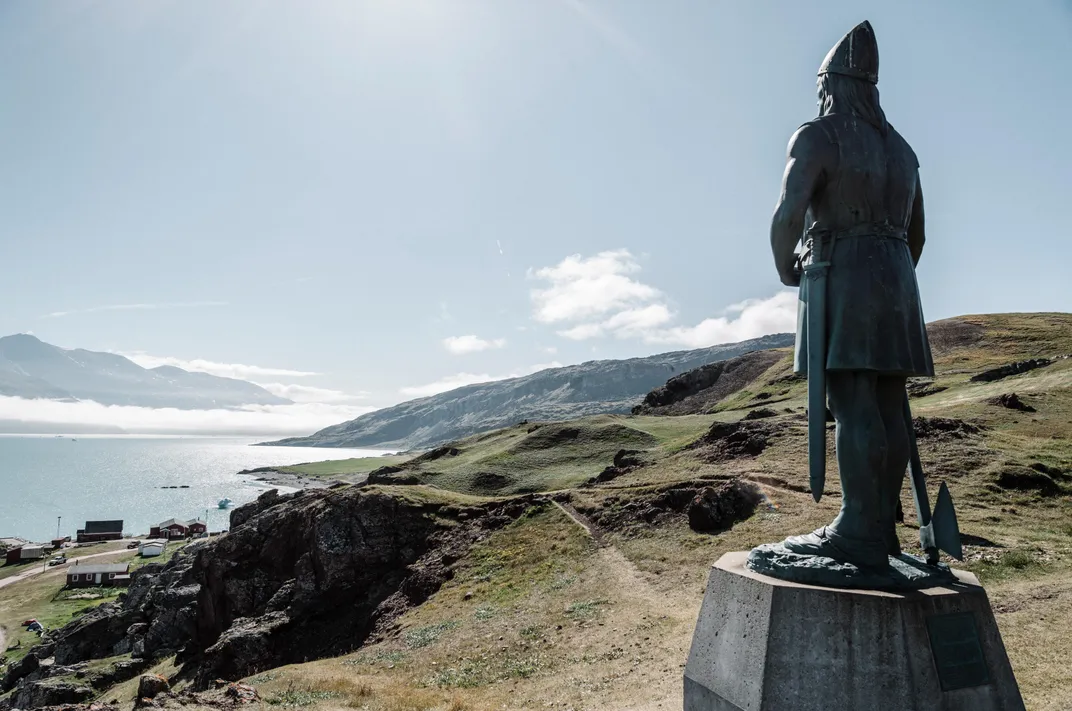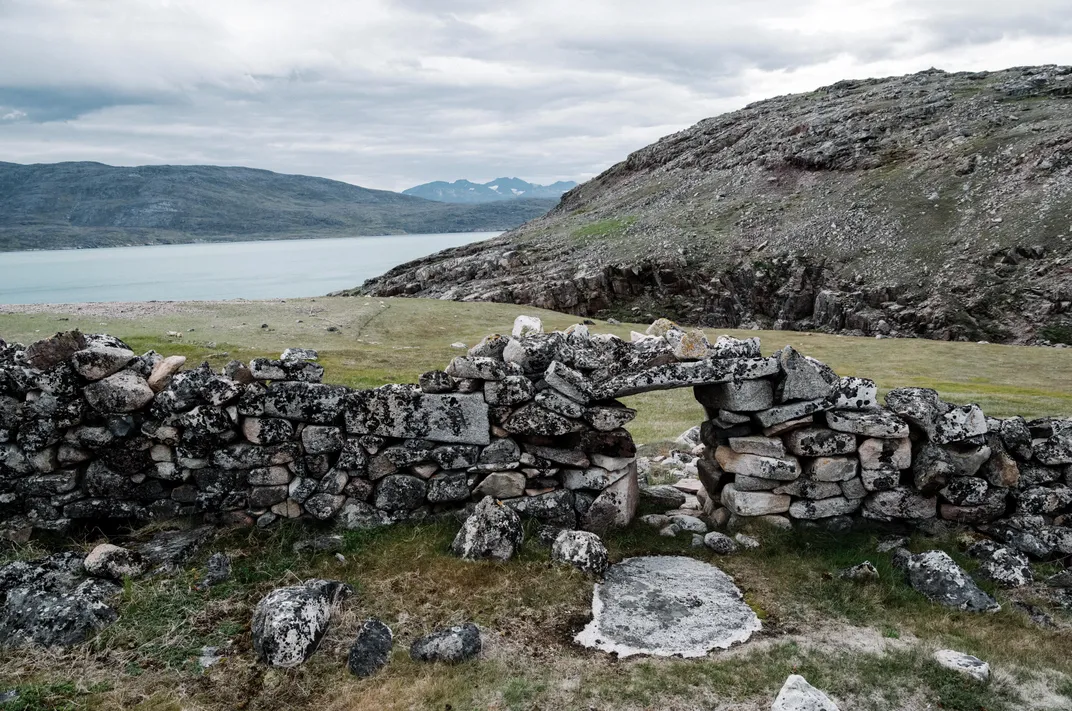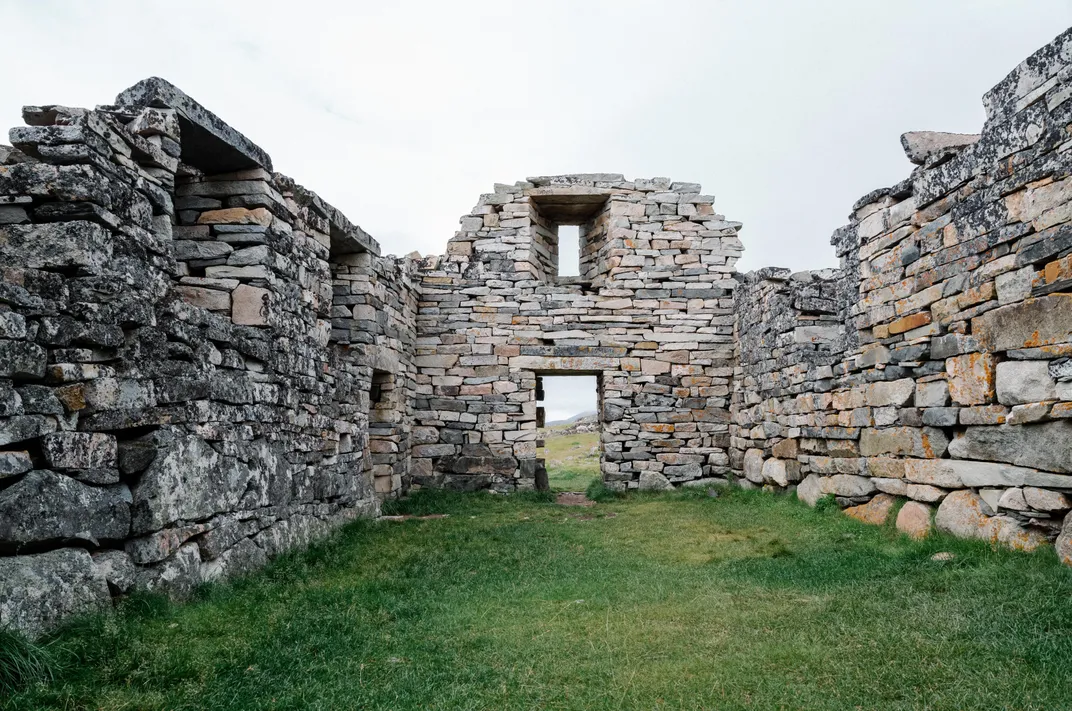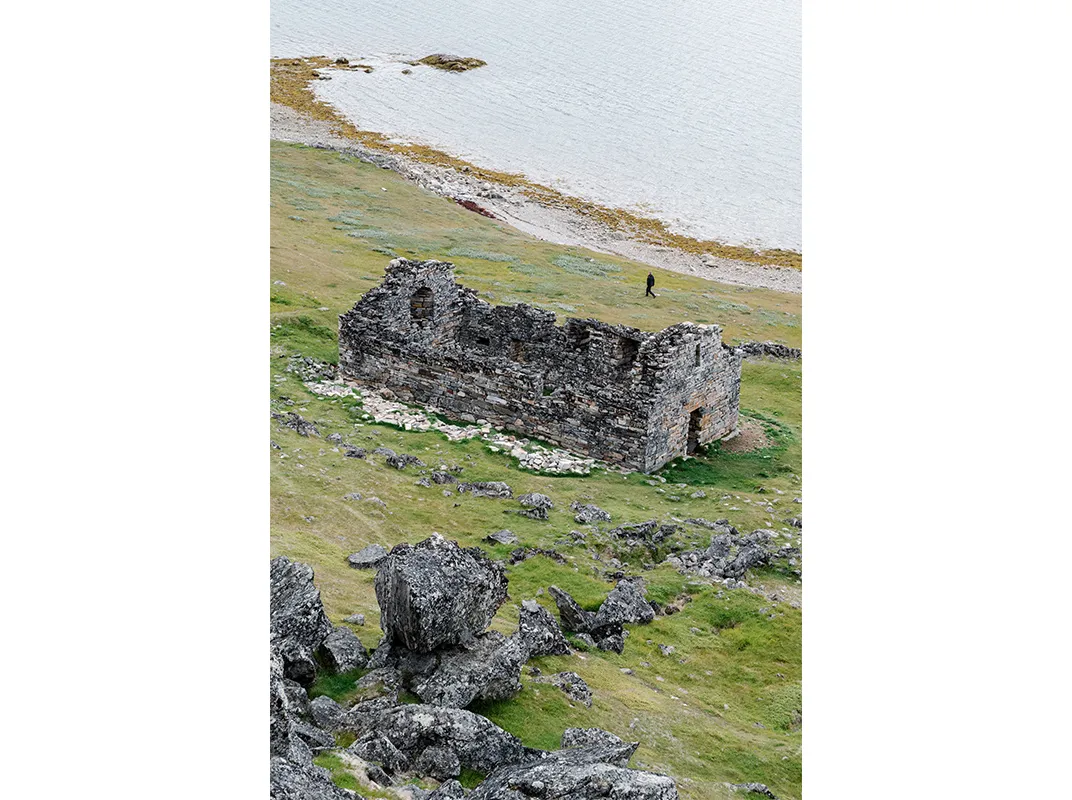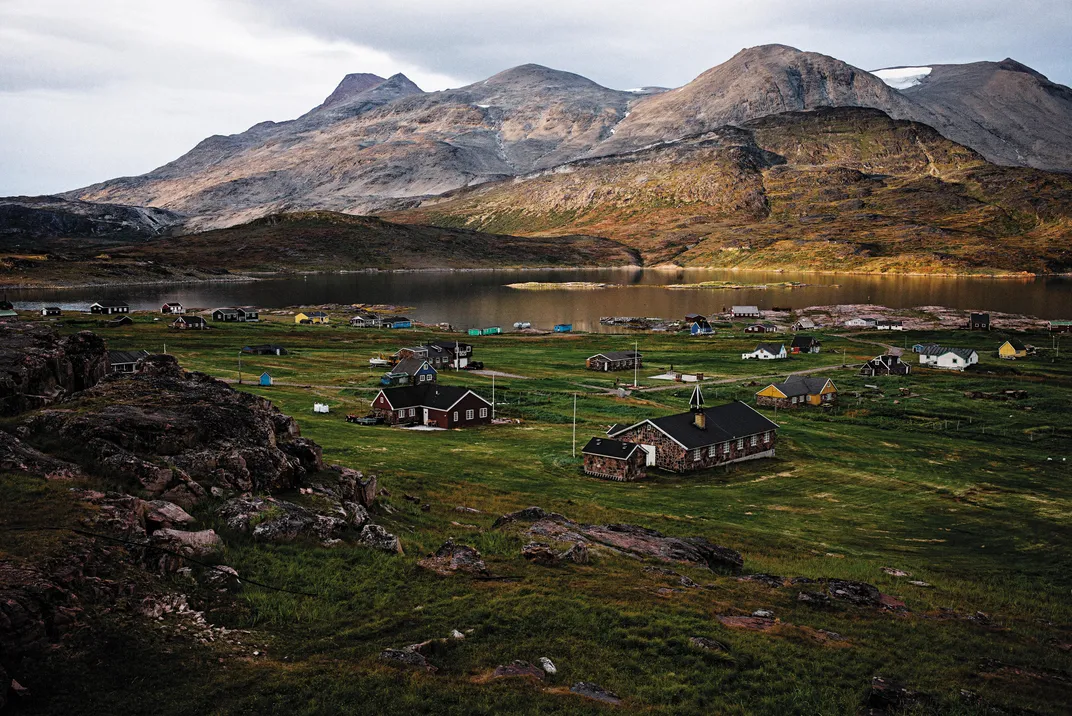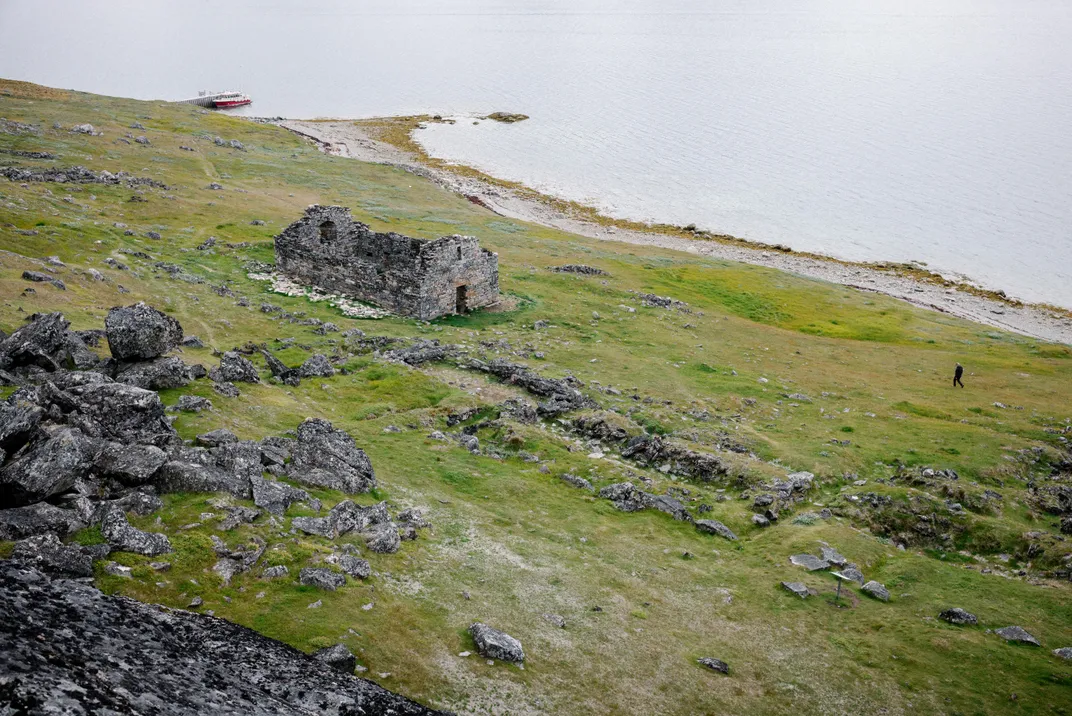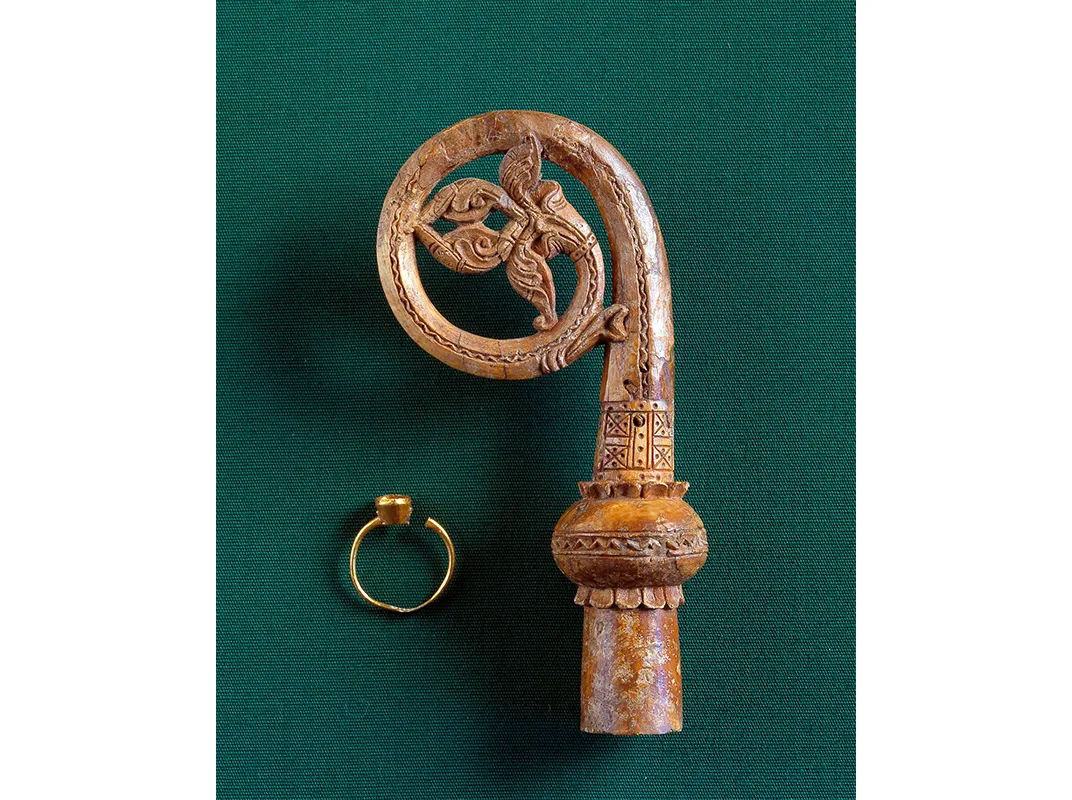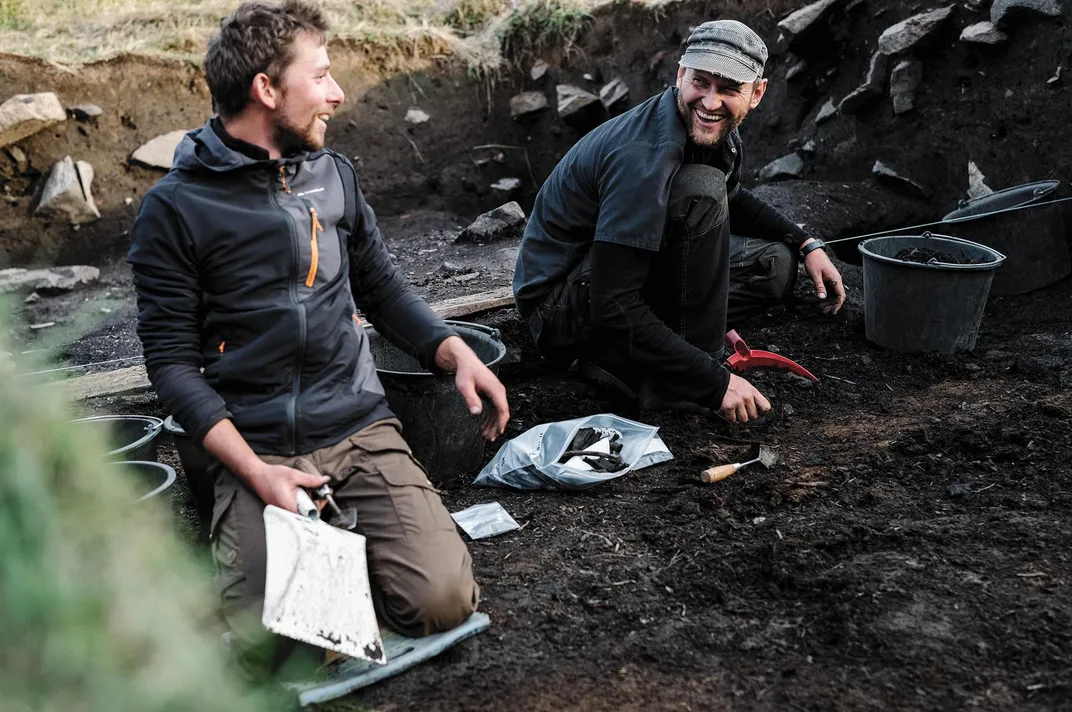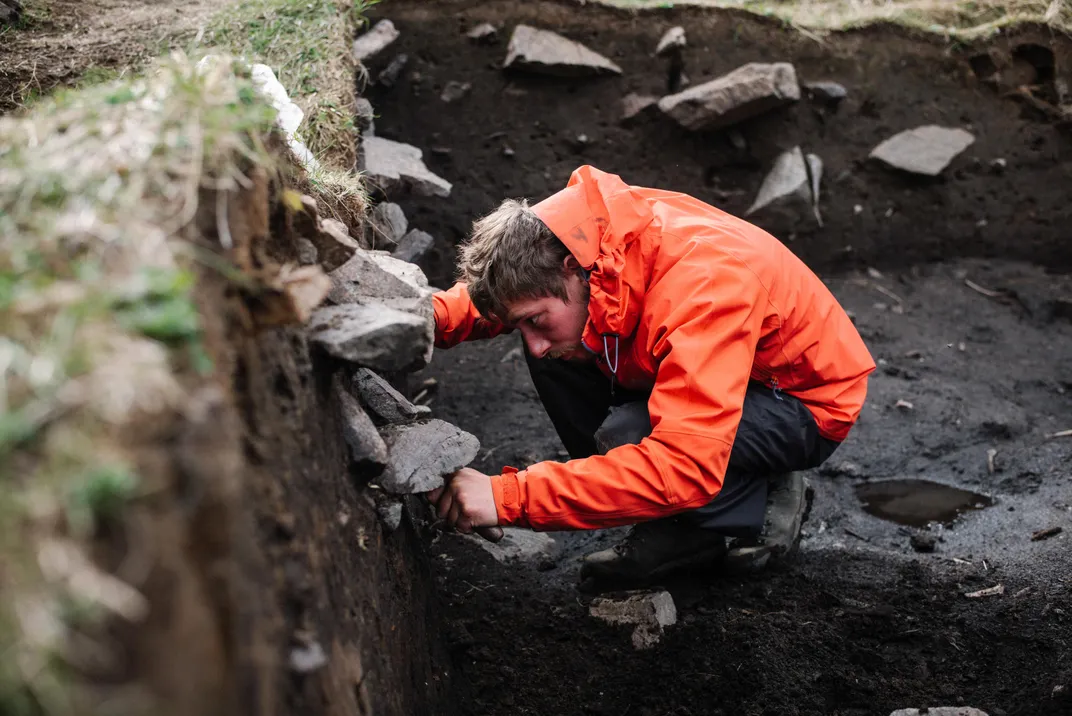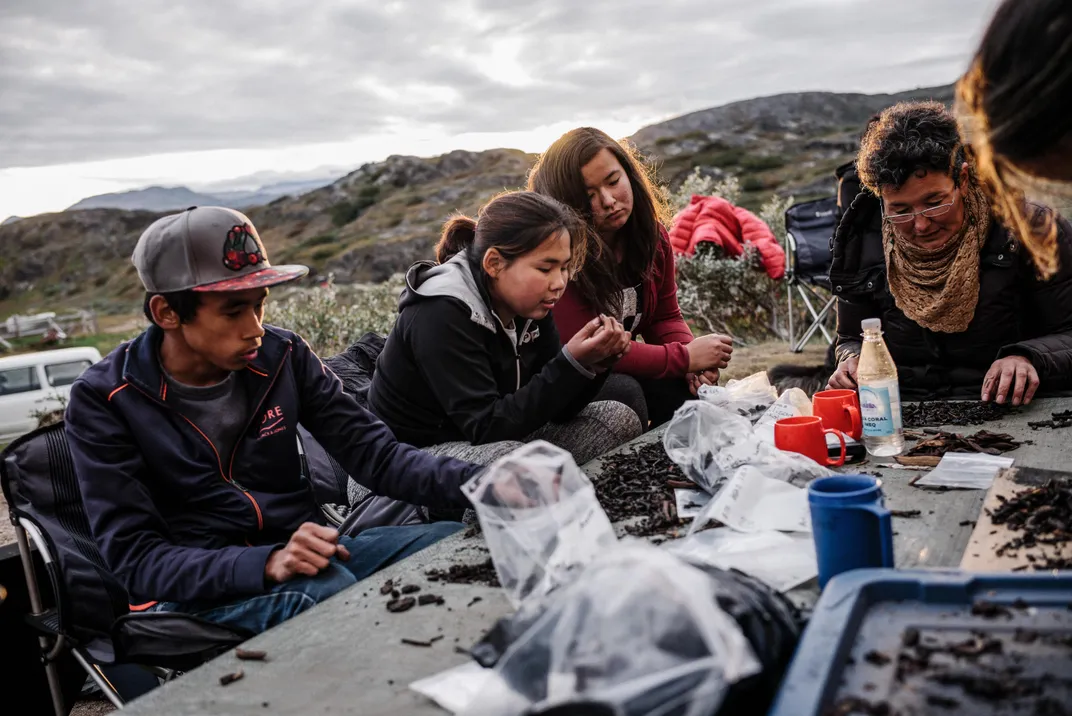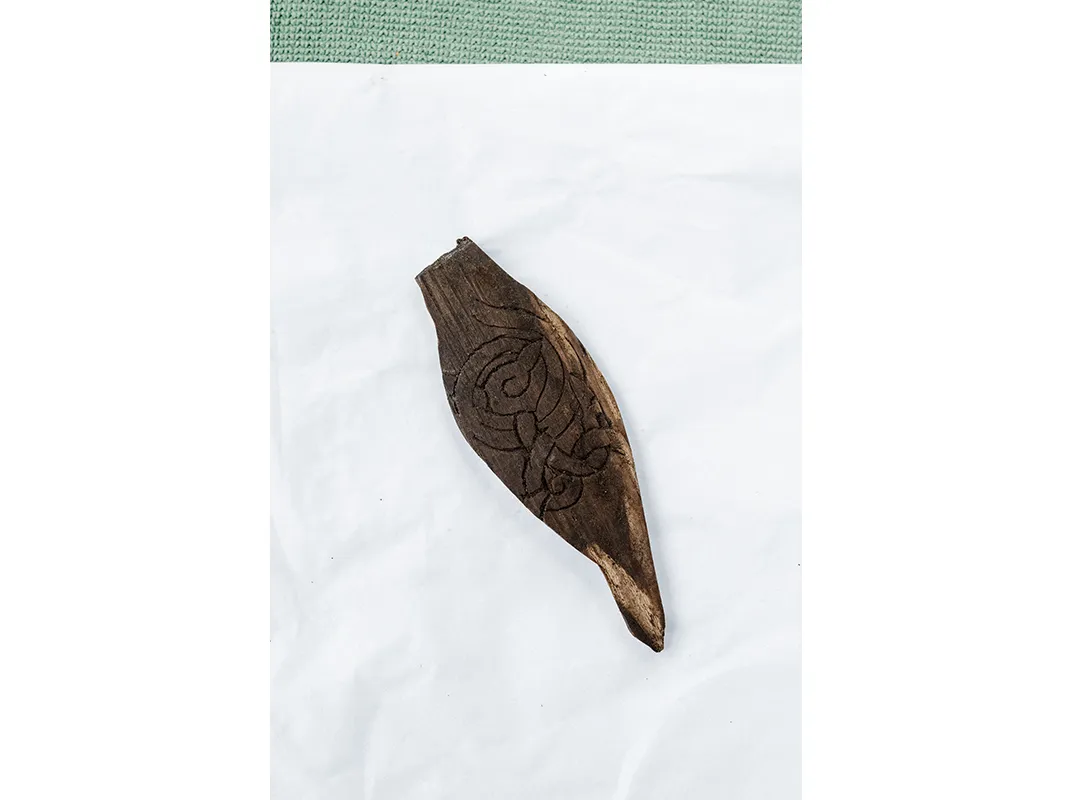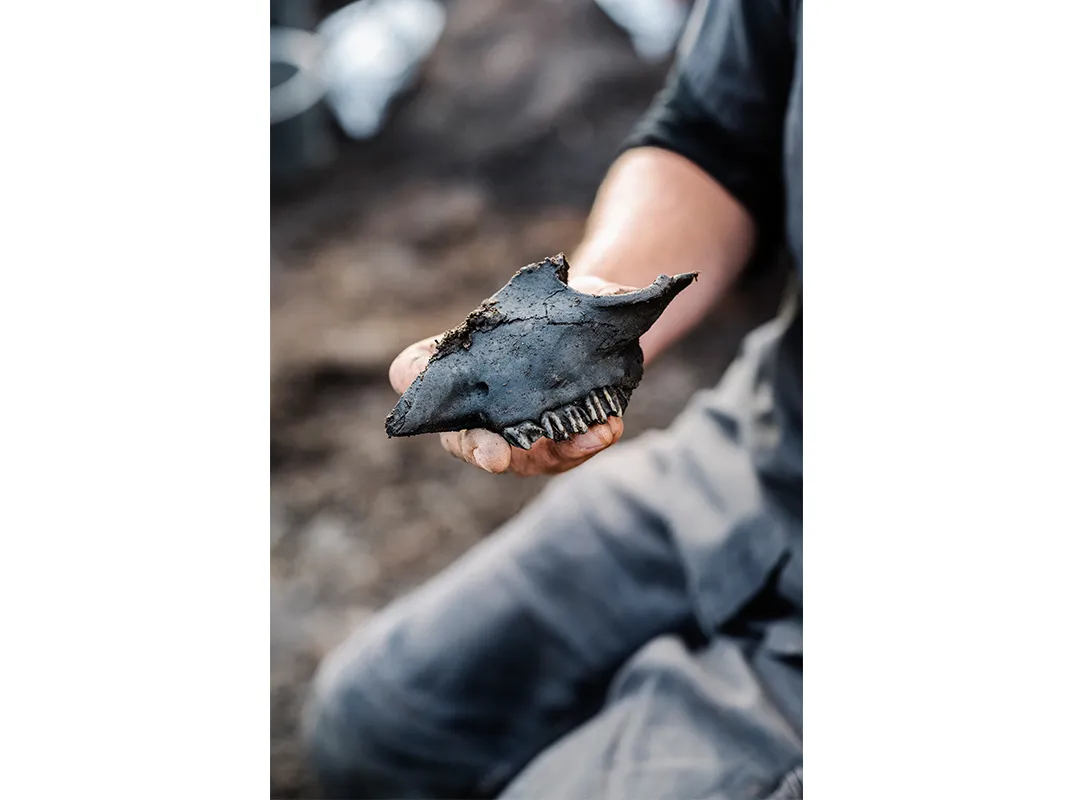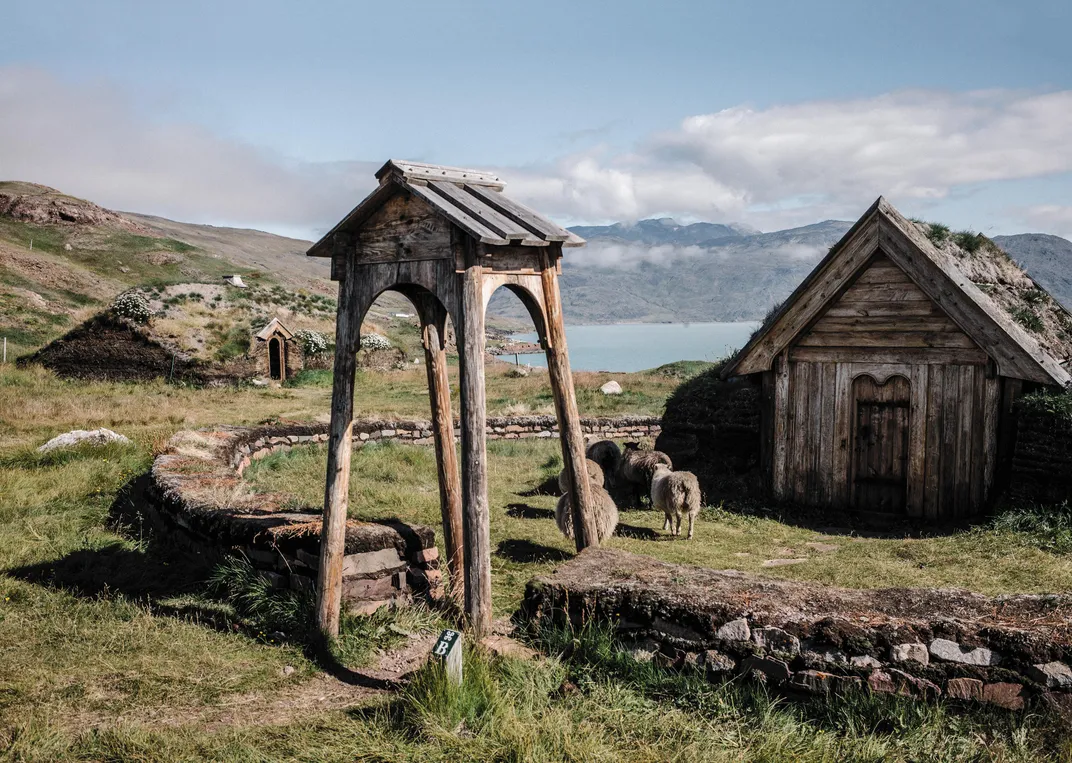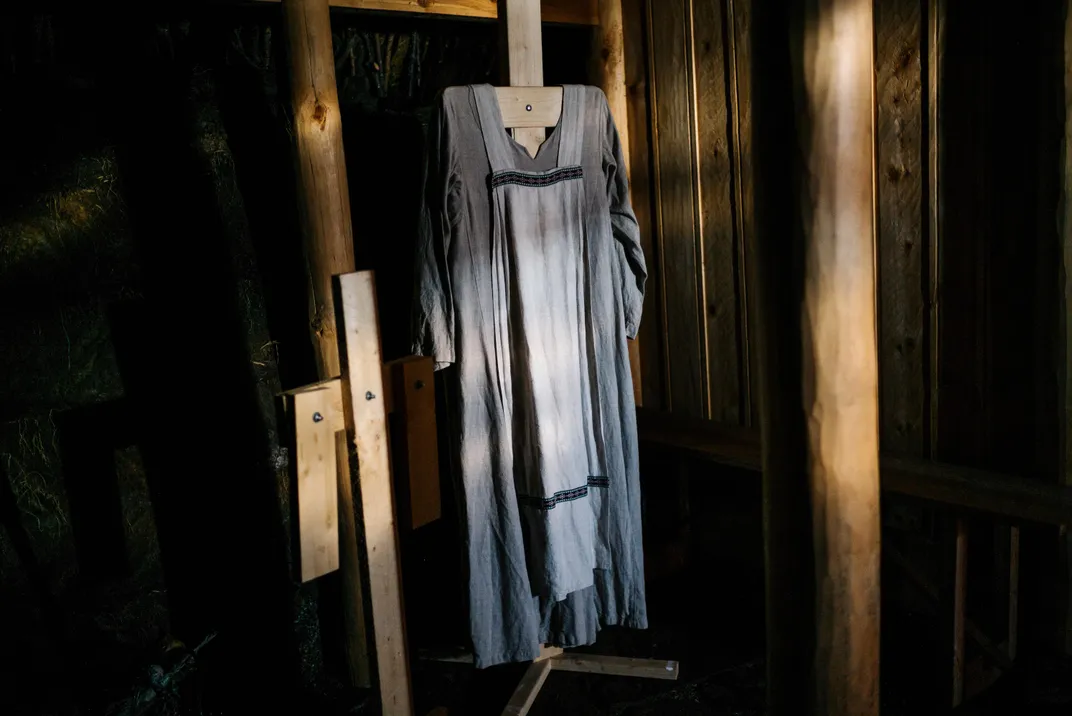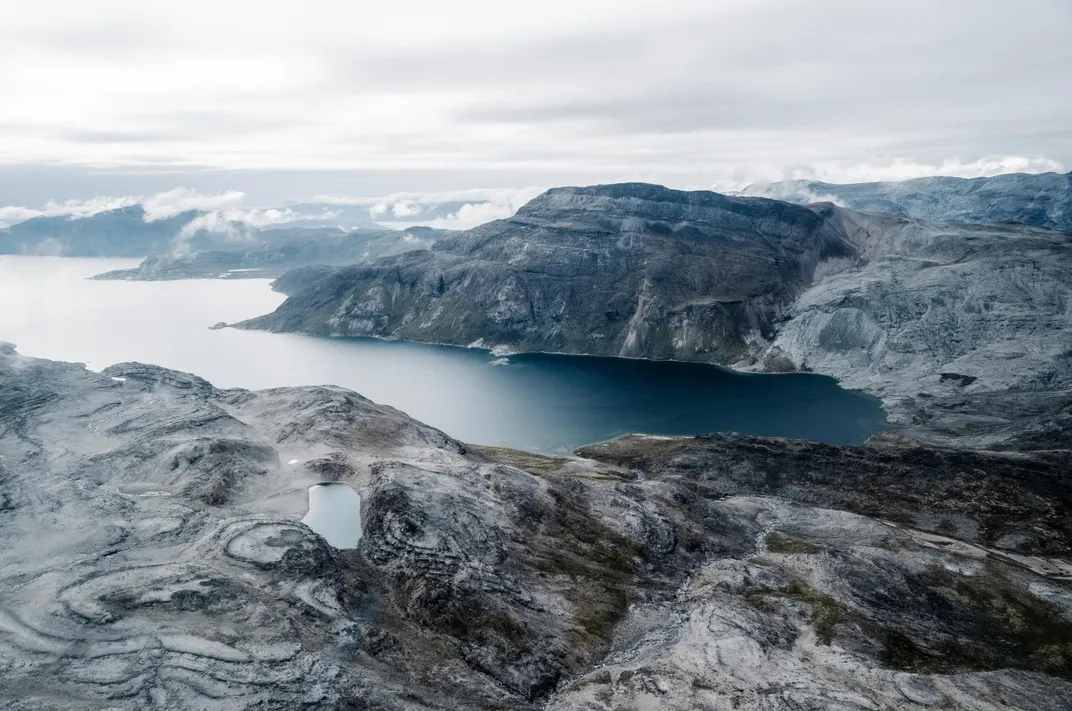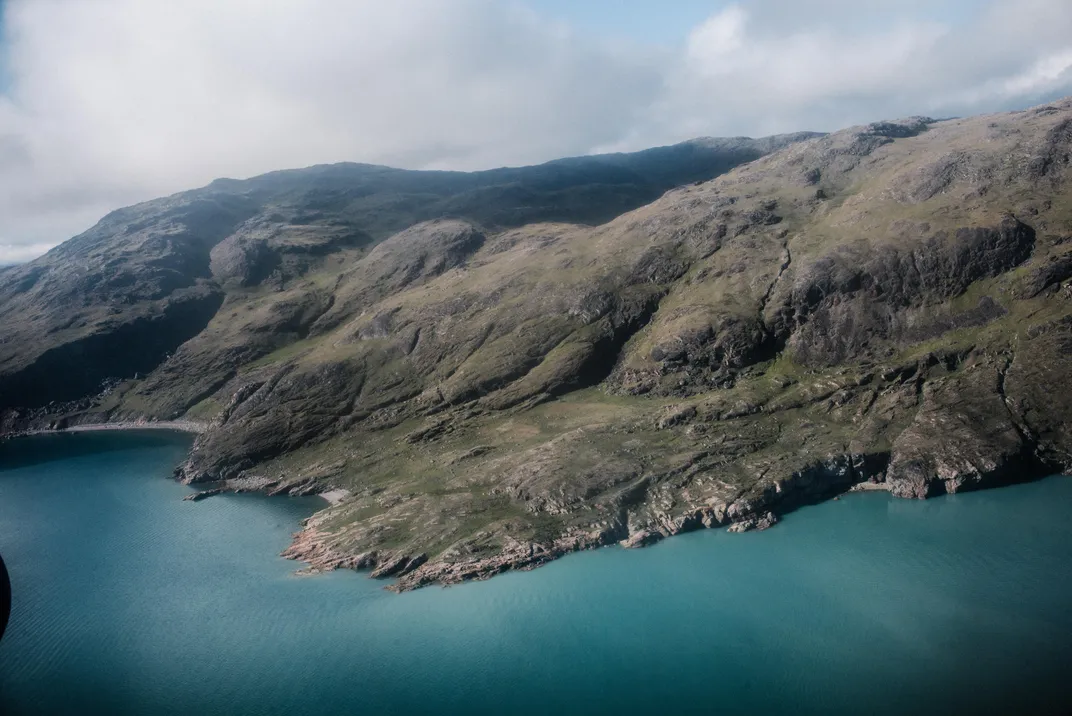Why Did Greenland’s Vikings Vanish?
Newly discovered evidence is upending our understanding of how early settlers made a life on the island — and why they suddenly disappeared
/https://tf-cmsv2-smithsonianmag-media.s3.amazonaws.com/filer/a5/db/a5db59d1-a127-4818-9f70-4fedb66f4bf9/mar2017_f07_greenlandvikings.jpg)
On the grassy slope of a fjord near the southernmost tip of Greenland stand the ruins of a church built by Viking settlers more than a century before Columbus sailed to the Americas. The thick granite-block walls remain intact, as do the 20-foot-high gables. The wooden roof, rafters and doors collapsed and rotted away long ago. Now sheep come and go at will, munching wild thyme where devout Norse Christian converts once knelt in prayer.
The Vikings called this fjord Hvalsey, which means “Whale Island” in Old Norse. It was here that Sigrid Bjornsdottir wed Thorstein Olafsson on Sunday, September 16, 1408. The couple had been sailing from Norway to Iceland when they were blown off course; they ended up settling in Greenland, which by then had been a Viking colony for some 400 years. Their marriage was mentioned in three letters written between 1409 and 1424, and was then recorded for posterity by medieval Icelandic scribes. Another record from the period noted that one person had been burned at the stake at Hvalsey for witchcraft.
But the documents are most remarkable—and baffling—for what they don’t contain: any hint of hardship or imminent catastrophe for the Viking settlers in Greenland, who’d been living at the very edge of the known world ever since a renegade Icelander named Erik the Red arrived in a fleet of 14 longships in 985. For those letters were the last anyone ever heard from the Norse Greenlanders.
They vanished from history.
“If there was trouble, we might reasonably have thought that there would be some mention of it,” says Ian Simpson, an archaeologist at the University of Stirling, in Scotland. But according to the letters, he says, “it was just an ordinary wedding in an orderly community.”
Europeans didn’t return to Greenland until the early 18th century. When they did, they found the ruins of the Viking settlements but no trace of the inhabitants. The fate of Greenland’s Vikings—who never numbered more than 2,500—has intrigued and confounded generations of archaeologists.
Those tough seafaring warriors came to one of the world’s most formidable environments and made it their home. And they didn’t just get by: They built manor houses and hundreds of farms; they imported stained glass; they raised sheep, goats and cattle; they traded furs, walrus-tusk ivory, live polar bears and other exotic arctic goods with Europe. “These guys were really out on the frontier,” says Andrew Dugmore, a geographer at the University of Edinburgh. “They’re not just there for a few years. They’re there for generations—for centuries.”
So what happened to them?
**********
Thomas McGovern used to think he knew. An archaeologist at Hunter College of the City University of New York, McGovern has spent more than 40 years piecing together the history of the Norse settlements in Greenland. With his heavy white beard and thick build, he could pass for a Viking chieftain, albeit a bespectacled one. Over Skype, here’s how he summarized what had until recently been the consensus view, which he helped establish: “Dumb Norsemen go into the north outside the range of their economy, mess up the environment and then they all die when it gets cold.”
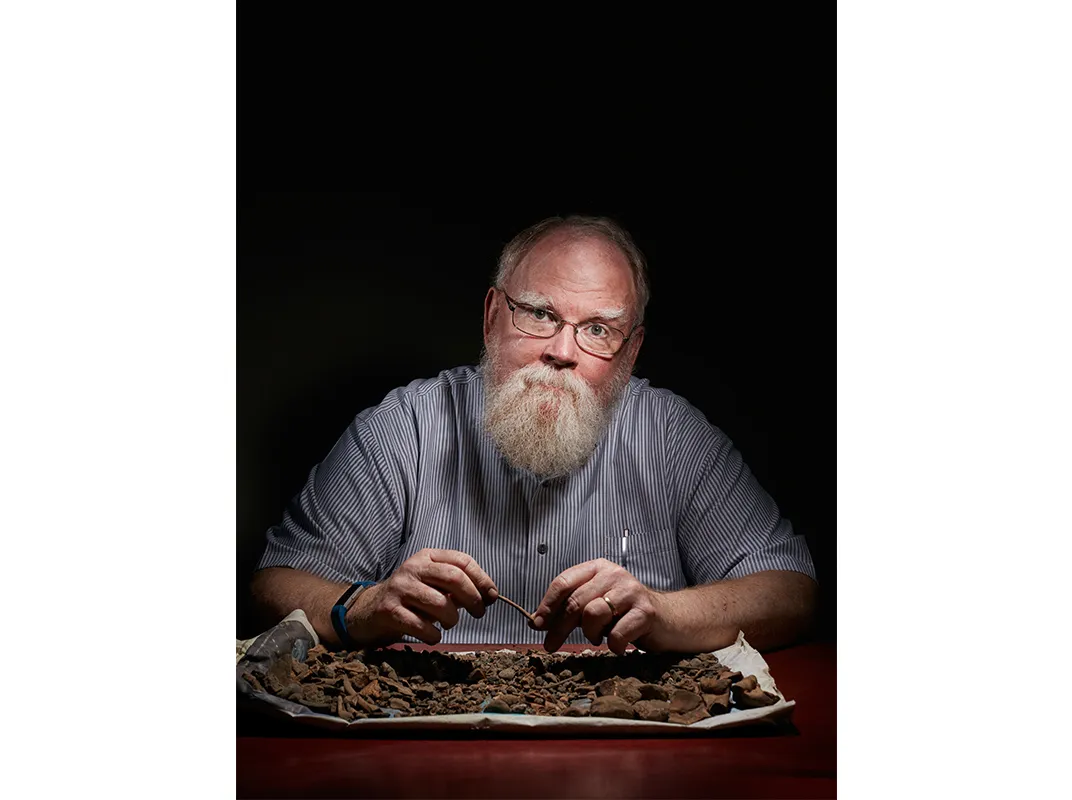
Accordingly, the Vikings were not just dumb, they also had dumb luck: They discovered Greenland during a time known as the Medieval Warm Period, which lasted from about 900 to 1300. Sea ice decreased during those centuries, so sailing from Scandinavia to Greenland became less hazardous. Longer growing seasons made it feasible to graze cattle, sheep and goats in the meadows along sheltered fjords on Greenland’s southwest coast. In short, the Vikings simply transplanted their medieval European lifestyle to an uninhabited new land, theirs for the taking.
But eventually, the conventional narrative continues, they had problems. Overgrazing led to soil erosion. A lack of wood—Greenland has very few trees, mostly scrubby birch and willow in the southernmost fjords—prevented them from building new ships or repairing old ones. But the greatest challenge—and the coup de grâce—came when the climate began to cool, triggered by an event on the far side of the world.
In 1257, a volcano on the Indonesian island of Lombok erupted. Geologists rank it as the most powerful eruption of the last 7,000 years. Climate scientists have found its ashy signature in ice cores drilled in Antarctica and in Greenland’s vast ice sheet, which covers some 80 percent of the country. Sulfur ejected from the volcano into the stratosphere reflected solar energy back into space, cooling Earth’s climate. “It had a global impact,” McGovern says. “Europeans had a long period of famine”—like Scotland’s infamous “seven ill years” in the 1690s, but worse. “The onset was somewhere just after 1300 and continued into the 1320s, 1340s. It was pretty grim. A lot of people starving to death.”
Amid that calamity, so the story goes, Greenland’s Vikings—numbering 5,000 at their peak—never gave up their old ways. They failed to learn from the Inuit, who arrived in northern Greenland a century or two after the Vikings landed in the south. They kept their livestock, and when their animals starved, so did they. The more flexible Inuit, with a culture focused on hunting marine mammals, thrived.
That is what archaeologists believed until a few years ago. McGovern’s own PhD dissertation made the same arguments. Jared Diamond, the UCLA geographer, showcased the idea in Collapse, his 2005 best seller about environmental catastrophes. “The Norse were undone by the same social glue that had enabled them to master Greenland’s difficulties,” Diamond wrote. “The values to which people cling most stubbornly under inappropriate conditions are those values that were previously the source of their greatest triumphs over adversity.”
But over the last decade a radically different picture of Viking life in Greenland has started to emerge from the remains of the old settlements, and it has received scant coverage outside of academia. “It’s a good thing they can’t make you give your PhD back once you’ve got it,” McGovern jokes. He and the small community of scholars who study the Norse experience in Greenland no longer believe that the Vikings were ever so numerous, or heedlessly despoiled their new home, or failed to adapt when confronted with challenges that threatened them with annihilation.
“It’s a very different story from my dissertation,” says McGovern. “It’s scarier. You can do a lot of things right—you can be highly adaptive; you can be very flexible; you can be resilient—and you go extinct anyway.” And according to other archaeologists, the plot thickens even more: It may be that Greenland’s Vikings didn’t vanish, at least not all of them.
**********
Lush grass now covers most of what was once the most important Viking settlement in Greenland. Gardar, as the Norse called it, was the official residence of their bishop. A few foundation stones are all that remain of Gardar’s cathedral, the pride of Norse Greenland, with stained glass and a heavy bronze bell. Far more impressive now are the nearby ruins of an enormous barn. Vikings from Sweden to Greenland measured their status by the cattle they owned, and the Greenlanders spared no effort to protect their livestock. The barn’s Stonehenge-like partition and the thick turf and stone walls that sheltered prized animals during brutal winters have endured longer than Gardar’s most sacred architecture.
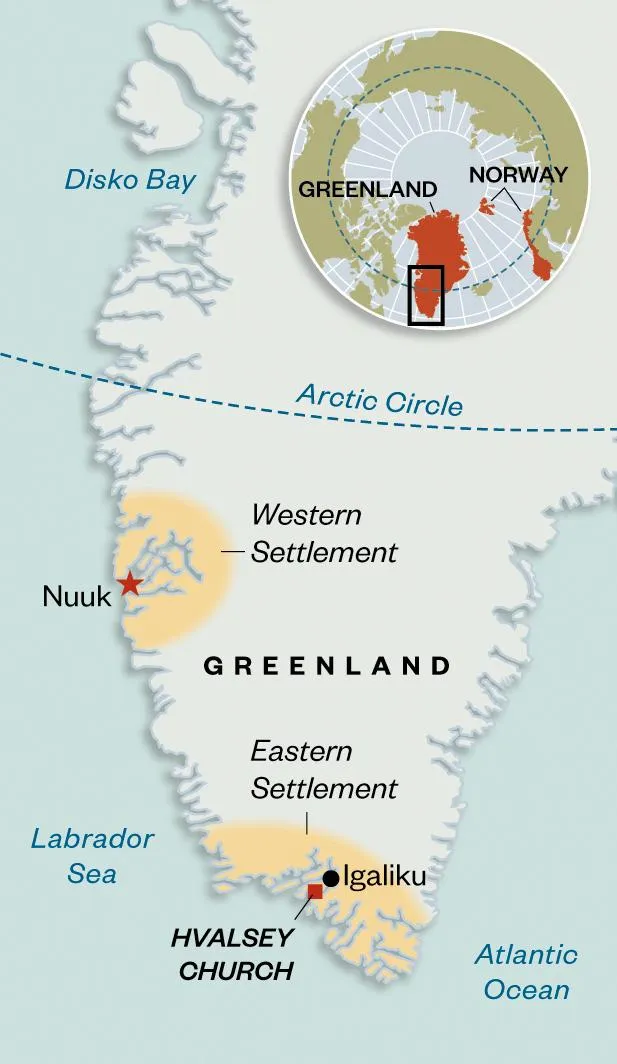
Gardar’s ruins occupy a small fenced-in field abutting the backyards of Igaliku, an Inuit sheep-farming community of about 30 brightly painted wooden houses overlooking a fjord backed by 5,000-foot-high snowcapped mountains. No roads run between towns in Greenland—planes and boats are the only options for traversing a coastline corrugated by innumerable fjords and glacial tongues. On an uncommonly warm and bright August afternoon, I caught a boat from Igaliku with a Slovenian photographer named Ciril Jazbec and rode a few miles southwest on Aniaaq fjord, a region Erik the Red must have known well. Late in the afternoon, with the arctic summer sun still high in the sky, we got off at a rocky beach where an Inuit farmer named Magnus Hansen was waiting for us in his pickup truck. After we loaded the truck with our backpacks and essential supplies requested by the archaeologists—a case of beer, two bottles of Scotch, a carton of menthol cigarettes and some tins of snuff—Hansen drove us to our destination: a Viking homestead being excavated by Konrad Smiarowski, one of McGovern’s doctoral students.
The homestead lies at the end of a hilly dirt road a few miles inland on Hansen’s farm. It’s no accident that most modern Inuit farms in Greenland are found near Viking sites: On our trip down the fjord, we were told that every local farmer knows the Norse chose the best locations for their homesteads.
The Vikings established two outposts in Greenland: one along the fjords of the southwest coast, known historically as the Eastern Settlement, where Gardar is located, and a smaller colony about 240 miles north, called the Western Settlement. Nearly every summer for the last several years, Smiarowski has returned to various sites in the Eastern Settlement to understand how the Vikings managed to live here for so many centuries, and what happened to them in the end.
This season’s site, a thousand-year-old Norse homestead, was once part of a vital community. “Everyone was connected over this huge landscape,” Smiarowski says. “If we walked for a day we could visit probably 20 different farms.”
He and his team of seven students have spent several weeks digging into a midden—a trash heap—just below the homestead’s tumbled ruins. On a cold, damp morning, Cameron Turley, a PhD candidate at the City University of New York, stands in the ankle-deep water of a drainage ditch. He’ll spend most of the day here, a heavy hose draped over his shoulder, rinsing mud from artifacts collected in a wood-framed sieve held by Michalina Kardynal, an undergraduate from Cardinal Stefan Wyszynski University in Warsaw. This morning they’ve found a delicate wooden comb, its teeth intact. They’re also finding seal bones. Lots of them.
“Probably about 50 percent of all bones at this site will be seal bones,” Smiarowski says as we stand by the drainage ditch in a light rain. He speaks from experience: Seal bones have been abundant at every site he has studied, and his findings have been pivotal in reassessing how the Norse adapted to life in Greenland. The ubiquity of seal bones is evidence that the Norse began hunting the animals “from the very beginning,” Smiarowski says. “We see harp and hooded seal bones from the earliest layers at all sites.”
A seal-based diet would have been a drastic shift from beef-and-dairy-centric Scandinavian fare. But a study of human skeletal remains from both the Eastern and Western settlements showed that the Vikings quickly adopted a new diet. Over time, the food we eat leaves a chemical stamp on our bones—marine-based diets mark us with different ratios of certain chemical elements than terrestrial foods do. Five years ago, researchers based in Scandinavia and Scotland analyzed the skeletons of 118 individuals from the earliest periods of settlement to the latest. The results perfectly complement Smiarowski’s fieldwork: Over time, people ate an increasingly marine diet, he says.
It’s raining heavily now, and we’re huddled beneath a blue tarp next to the midden, sipping coffee and ingesting some terrestrial chemical elements in the form of cookies. In the earliest days of the settlements, Smiarowski says, the study found that marine animals made up 30 to 40 percent of the Norse diet. The percentage steadily climbed, until, by the end of the settlement period, 80 percent of the Norse diet came from the sea. Beef eventually became a luxury, most likely because the volcano-induced climate change made it vastly more difficult to raise cattle in Greenland.
Judging from the bones Smiarowski has uncovered, most of the seafood consisted of seals—few fish bones have been found. Yet it appears the Norse were careful: They limited their hunting of the local harbor seal, Phoca vitulina, a species that raises its young on beaches, making it easy prey. (The harbor seal is critically endangered in Greenland today due to overhunting.) “They could have wiped them out, and they didn’t,” Smiarowski says. Instead, they pursued the more abundant—and more difficult to catch—harp seal, Phoca groenlandica, which migrates up the west coast of Greenland every spring on the way from Canada. Those hunts, he says, must have been well-organized communal affairs, with the meat distributed to the entire settlement—seal bones have been found at homestead sites even far inland. The regular arrival of the seals in the spring, just when the Vikings’ winter stores of cheese and meat were running low, would have been keenly anticipated.
“People came from different farms; some provided labor, some provided boats,” Smiarowski says, speculating. “Maybe there were several centers organizing things along the coast of the Eastern Settlement. Then the catch was divided among the farms, I would assume according to how much each farm contributed to the hunt.” The annual spring seal hunt might have resembled communal whale hunts practiced to this day by the Faroe Islanders, who are the descendants of Vikings.
The Norse harnessed their organizational energy for an even more important task: annual walrus hunts. Smiarowski, McGovern and other archaeologists now suspect that the Vikings first traveled to Greenland not in search of new land to farm—a motive mentioned in some of the old sagas—but to acquire walrus-tusk ivory, one of medieval Europe’s most valuable trade items. Who, they ask, would risk crossing hundreds of miles of arctic seas just to farm in conditions far worse than those at home? As a low-bulk, high-value item, ivory would have been an irresistible lure for seafaring traders.
Many ivory artifacts from the Middle Ages, whether religious or secular, were carved from walrus tusks, and the Vikings, with their ships and far-flung trading networks, monopolized the commodity in Northern Europe. After hunting walruses to extinction in Iceland, the Norse must have sought them out in Greenland. They found large herds in Disko Bay, about 600 miles north of the Eastern Settlement and 300 miles north of the Western Settlement. “The sagas would have us believe that it was Erik the Red who went out and explored [Greenland],” says Jette Arneborg, a senior researcher at the National Museum of Denmark, who, like McGovern, has studied the Norse settlements for decades. “But the initiative might have been from elite farmers in Iceland who wanted to keep up the ivory trade—it might have been in an attempt to continue this trade that they went farther west.”
Smiarowski and other archaeologists have unearthed ivory fragments at nearly every site they’ve studied. It seems the Eastern and Western settlements may have pooled their resources in an annual walrus hunt, sending out parties of young men every summer. “An individual farm couldn’t do it,” he says. “You would need a really good boat and a crew. And you need to get there. It’s far away.” Written records from the period mention sailing times of 27 days to the hunting grounds from the Eastern Settlement and 15 days from the Western Settlement.
To maximize cargo space, the walrus hunters would have returned home with only the most valuable parts of the animal—the hides, which were fashioned into ships’ rigging, and parts of the animals’ skulls. “They did the extraction of the ivory here on-site,” Smiarowski says. “Not that many actually on this site here, but on most other sites you have these chips of walrus maxilla [the upper jaw]—very dense bone. It’s quite distinct from other bones. It’s almost like rock—very hard.”
How profitable was the ivory trade? Every six years, the Norse in Greenland and Iceland paid a tithe to the Norwegian king. A document from 1327, recording the shipment of a single boatload of tusks to Bergen, Norway, shows that that boatload, with tusks from 260 walruses, was worth more than all the woolen cloth sent to the king by nearly 4,000 Icelandic farms for one six-year period.
Archaeologists once assumed that the Norse in Greenland were primarily farmers who did some hunting on the side. Now it seems clear that the reverse was true. They were ivory hunters first and foremost, their farms only a means to an end. Why else would ivory fragments be so prevalent among the excavated sites? And why else would the Vikings send so many able-bodied men on hunting expeditions to the far north at the height of the farming season? “There was a huge potential for ivory export,” says Smiarowski, “and they set up farms to support that.” Ivory drew them to Greenland, ivory kept them there, and their attachment to that toothy trove may be what eventually doomed them.
**********
When the Norse arrived in Greenland, there were no locals to teach them how to live. “The Scandinavians had this remarkable ability to colonize these high-latitude islands,” says Andrew Dugmore. “You have to be able to hunt wild animals; you have to build up your livestock; you have to work hard to exist in these areas....This is about as far as you can push the farming system in the Northern Hemisphere.”
And push it they did. The growing season was short, and the land vulnerable to overgrazing. Ian Simpson has spent many seasons in Greenland studying soil layers where the Vikings farmed. The strata, he says, clearly show the impact of their arrival: The earliest layers are thinner, with less organic material, but within a generation or two the layers stabilized and the organic matter built up as the Norse farmwomen manured and improved their fields while the men were out hunting. “You can interpret that as being a sign of adaptation, of them getting used to the landscape and being able to read it a little better,” Simpson says.
For all their intrepidness, though, the Norse were far from self-sufficient, and imported grains, iron, wine and other essentials. Ivory was their currency. “Norse society in Greenland couldn’t survive without trade with Europe,” says Arneborg, “and that’s from day one.”
Then, in the 13th century, after three centuries, their world changed profoundly. First, the climate cooled because of the volcanic eruption in Indonesia. Sea ice increased, and so did ocean storms—ice cores from that period contain more salt from oceanic winds that blew over the ice sheet. Second, the market for walrus ivory collapsed, partly because Portugal and other countries started to open trade routes into sub-Saharan Africa, which brought elephant ivory to the European market. “The fashion for ivory began to wane,” says Dugmore, “and there was also the competition with elephant ivory, which was much better quality.” And finally, the Black Death devastated Europe. There is no evidence that the plague ever reached Greenland, but half the population of Norway—which was Greenland’s lifeline to the civilized world—perished.
The Norse probably could have survived any one of those calamities separately. After all, they remained in Greenland for at least a century after the climate changed, so the onset of colder conditions alone wasn’t enough to undo them. Moreover, they were still building new churches—like the one at Hvalsey—in the 14th century. But all three blows must have left them reeling. With nothing to exchange for European goods—and with fewer Europeans left—their way of life would have been impossible to maintain. The Greenland Vikings were essentially victims of globalization and a pandemic.
“If you consider the world today, many communities will face exposure to climate change,” says Dugmore. “They’ll also face issues of globalization. The really difficult bit is when you have exposure to both.”
**********
So what was the endgame like in Greenland? Although archaeologists now agree that the Norse did about as well as any society could in confronting existential threats, they remain divided over how the Vikings’ last days played out. Some believe that the Norse, faced with the triple threat of economic collapse, pandemic and climate change, simply packed up and left. Others say the Norse, despite their adaptive ingenuity, met a far grimmer fate.
For McGovern, the answer is clear. “I think in the end this was a real tragedy. This was the loss of a small community, a thousand people maybe at the end. This was extinction.”
The Norse, he says, were especially vulnerable to sudden death at sea. Revised population estimates, based on more accurate tallies of the number of farms and graves, put the Norse Greenlanders at no more than 2,500 at their peak—less than half the conventional figure. Every spring and summer, nearly all the men would be far from home, hunting. As conditions for raising cattle worsened, the seal hunts would have been ever more vital—and more hazardous. Despite the decline of the ivory trade, the Norse apparently continued to hunt walrus until the very end. So a single storm at sea could have wiped out a substantial number of Greenland’s men—and by the 14th century the weather was increasingly stormy. “You see similar things happening at other places and other times,” McGovern says. “In 1881, there was a catastrophic storm when the Shetland fishing fleet was out in these little boats. In one afternoon about 80 percent of the men and boys of the Shetlands drowned. A whole bunch of little communities never recovered.”
Norse society itself comprised two very small communities: the Eastern and Western settlements. With such a sparse population, any loss—whether from death or emigration—would have placed an enormous strain on the survivors. “If there weren’t enough of them, the seal hunt would not be successful,” says Smiarowski. “And if it was not successful for a couple of years in a row, then it would be devastating.”
McGovern thinks a few people might have migrated out, but he rules out any sort of exodus. If Greenlanders had emigrated en masse to Iceland or Norway, surely there would have been a record of such an event. Both countries were literate societies, with a penchant for writing down important news. “If you had hundreds or a thousand people coming out of Greenland,” McGovern says, “someone would have noticed.”
Niels Lynnerup, a forensic anthropologist at the University of Copenhagen who has studied Viking burial sites in Greenland, isn’t so sure. “I think in Greenland it happened very gradually and undramatically,” he tells me as we sit in his office, beneath a poster of the Belgian cartoon character Tintin. “Maybe it’s the usual human story. People move to where there are resources. And they move away when something doesn’t work for them.” As for the silence of the historical record, he says, a gradual departure might not have attracted much attention.
The ruins themselves hint at an orderly departure. There is no evidence of conflict with the Inuit or of any intentional damage to homesteads. And aside from a gold ring found on the skeletal finger of a bishop at Gardar, and his narwhal-tusk staff, no items of real value have been found at any sites in Greenland. “When you abandon a small settlement, what do you take with you? The valuables, the family jewelry,” says Lynnerup. “You don’t leave your sword or your good metal knife....You don’t abandon Christ on his crucifix. You take that along. I’m sure the cathedral would have had some paraphernalia—cups, candelabras—which we know medieval churches have, but which have never been found in Greenland.”
Jette Arneborg and her colleagues found evidence of a tidy leave-taking at a Western Settlement homestead known as the Farm Beneath the Sands. The doors on all but one of the rooms had rotted away, and there were signs that abandoned sheep had entered those doorless rooms. But one room retained a door, and it was closed. “It was totally clean. No sheep had been in that room,” says Arneborg. For her, the implications are obvious. “They cleaned up, took what they wanted, and left. They even closed the doors.”
Perhaps the Norse could have toughed it out in Greenland by fully adopting the ways of the Inuit. But that would have meant a complete surrender of their identity. They were civilized Europeans—not skraelings, or wretches, as they called the Inuit. “Why didn’t the Norse just go native?” Lynnerup asks. “Why didn’t the Puritans just go native? But of course they didn’t. There was never any question of the Europeans who came to America becoming nomadic and living off buffalo.”
We do know that at least two people made it out of Greenland alive: Sigrid Bjornsdottir and Thorstein Olafsson, the couple who married at Hvalsey’s church. They eventually settled in Iceland, and in 1424, for reasons lost to history, they needed to provide letters and witnesses proving that they had been married in Greenland. Whether they were among a lucky few survivors or part of a larger immigrant community may remain unknown. But there’s a chance that Greenland’s Vikings never vanished, that their descendants are with us still.
Related Reads
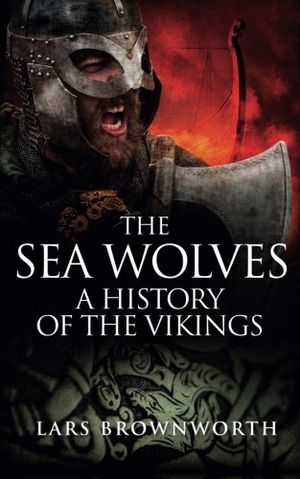
The Sea Wolves: A History of the Vikings
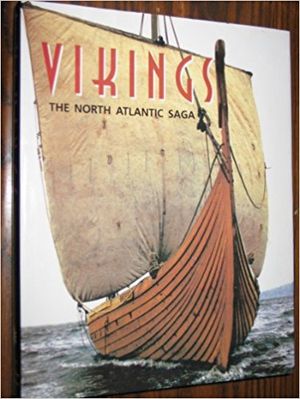
Vikings : The North Atlantic Saga
